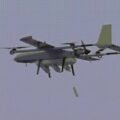Leading a consortium of researchers selected by the Air Force Research Laboratory (AFRL) and the Air Force Office of Scientific Research (AFOSR), a team from Carnegie-Mellon University (CMU) is laying the foundation for a fleet of AI-controlled robotic craft designed to service on-orbit satellites. This unprecedented effort hopes to do the basic research and fundamental design groundwork that is needed across a vast array of technical fields to ultimately bring their futuristic vision to reality.
BACKGROUND: SATELLITES ARE LAUNCH ONCE, USE ONCE
According to the press release announcing the robotic satellite servicing project, there are currently over 6,500 man-made satellites in Earth’s orbit, with only half of those still in operation. Unfortunately, aside from a few missions by the now defunct NASA Space Shuttle to repair and upgrade the Hubble telescope, virtually all unmanned spacecraft will end their service life without undergoing any basic maintenance or repair. In short, according to that same release, such satellites are termed “launch once, use once.”
Now, the research team from CMU is looking to change that equation, with hopes of one day being able to send AI-controlled robotic spacecraft on maintenance, refueling or even repair missions, extending the useful life of a great number of current and future satellites.
ANALYSIS: NO ONE KNOWS HOW TO REFUEL SATELLITES
“This is an incredible opportunity to work together toward an ambitious goal,” said the program’s principal investigator Howie Choset, a professor in the Robotics Institute at CMU’s School of Computer Science. “No one knows how to refuel spacecraft such as satellites and telescopes. If we’re successful, we will.”
To accomplish this goal, Choset and fellow CMU researcher Matt Travers have partnered with researchers at Texas A&M University, the University of New Mexico and Northrop Grumman Corporation, each with its own area of expertise.
For instance, according to that same release, UNM’s Agile Manufacturing Lab “provides state-of-the-art robotics and automation equipment aimed at creating on-orbit advanced manufacturing.” On the other hand, the Texas A&M Land Air and Space Robotics Lab “has decades of experience in satellite rendezvous, docking and proximity operations and best-in-class ground robot emulation.”
By tapping into these various specialties, the researchers will look to improve on current technologies that support the overall project goals. These include things like self-deployable construction tools, decentralized autonomy of robotic systems, attaching new components to exiting platforms already in space and even intelligent and interactive robotic inspections techniques.
“Our vision for basic and applied research will open a new frontier of opportunities to maximize the utility for satellites and other in-orbit assets by prolonging, enhancing or augmenting their mission capabilities,” said Choset. “This ushers in a new era of satellite capabilities and configurations that will transform the future of space operations.”
OUTLOOK: LAYING THE FOUNDATION FOR FUTURE SYSTEMS
Before this latest effort, both Choset and Travers had previously worked on systems of this nature while at Northrop Grumman, a company that has already shown some competency with refueling satellites via their Mission Extension Vehicles. Now, that work will continue, only with a full team of experts across a range of institutions, all working together to pave the way forward for regular, automated maintenance and repair of the world’s on-orbit assets.
“Servicing satellites in orbit will soon become vital to the operations of government and commercial missions,” said Andy Kwas, a Northrop Grumman research fellow. “Our goal is to develop and transition critical concepts from this consortium to further revolutionize technologies for both government and commercial use.”
And if successful, Kwas says that “this three-way partnership among academia, government and industry will help play a critical role in enhancing Department of Defense-relevant capability in the space domain.”
Follow and connect with author Christopher Plain on Twitter: @plain_fiction
